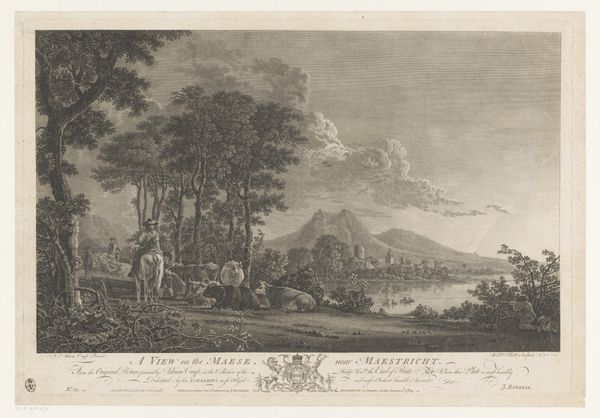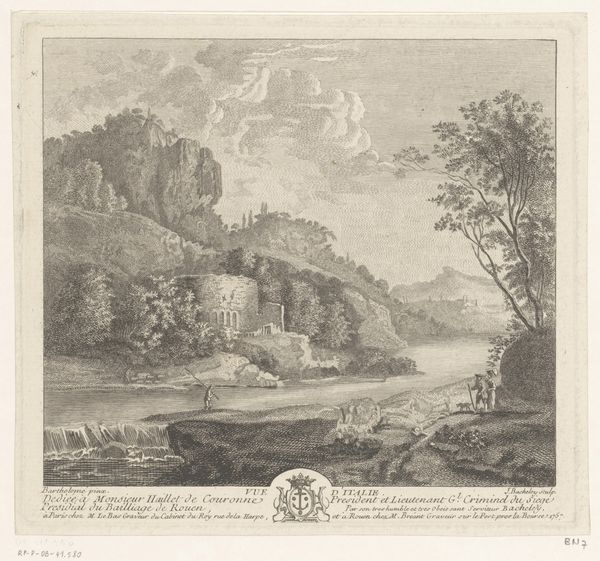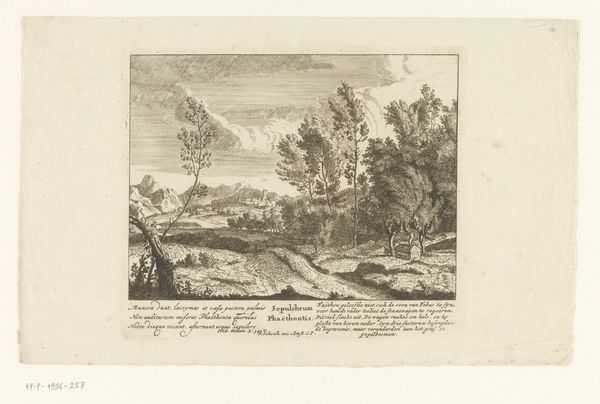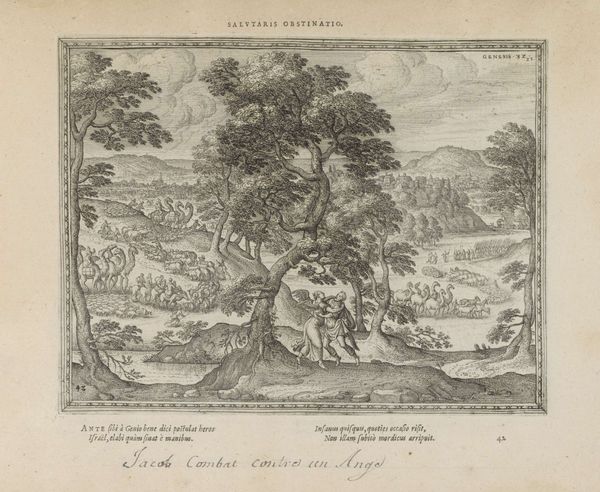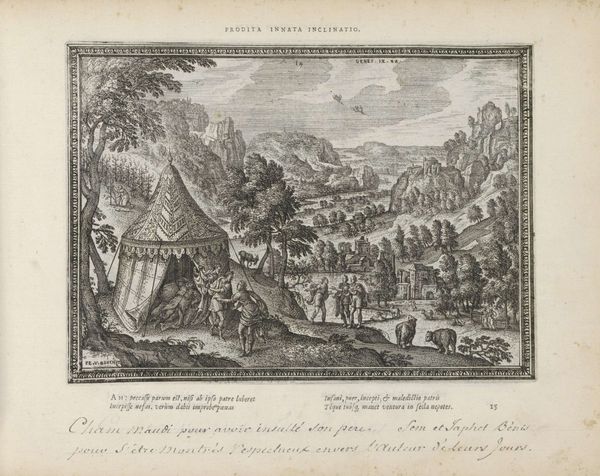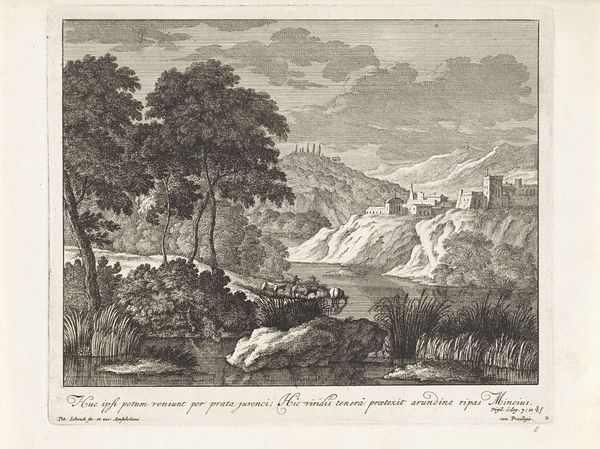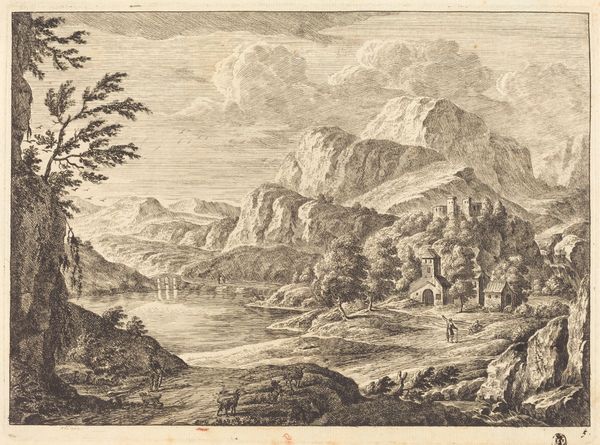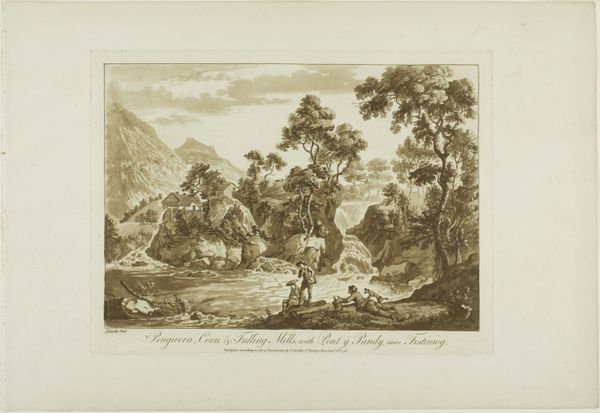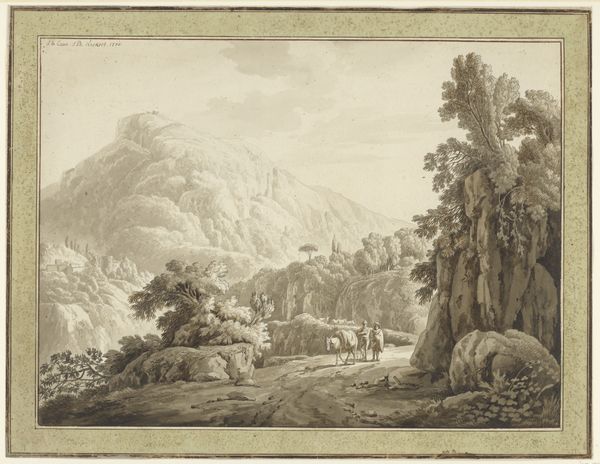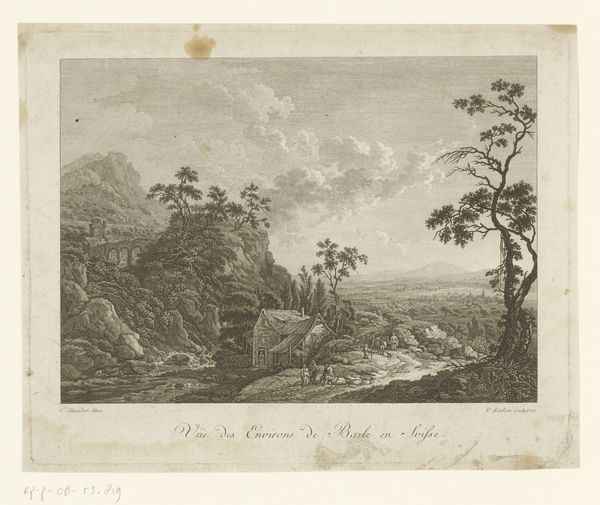
print, engraving
#
neoclacissism
# print
#
landscape
#
engraving
Dimensions: height 145 mm, width 195 mm, height 55 mm, width 196 mm
Copyright: Rijks Museum: Open Domain
Curator: I am struck by the stark beauty and meticulous detail in this 1787 engraving, "Berglandschap met een rivier," by Carl Friedrich Holtzmann. The contrast of light and shadow creates an almost ethereal quality. What are your initial thoughts? Editor: It's very graphic and crisp. The lines describing the rock face look tactile. You can almost feel the texture of the landscape, the way it’s worked, especially in contrast to the more stippled areas, the river. Curator: Precisely. Holtzmann’s rendering of the landscape speaks to a burgeoning Neoclassical interest in the sublime, the grand, but tempered by an engraver's precise eye for detail. We are situated at this tension between the representation of raw nature and its idealization through an elite artistic practice. Editor: Yes, I am fascinated by the labor embedded in this type of reproductive print. Think of the multiple stages and skilled hands required from the original drawing to the etched copperplate and then, finally, to the impressions struck. Consider, too, its purpose: dissemination of visual information. This landscape view circulated for an audience well beyond its creation. It really brings forth the intersection of craftsmanship, technique, and artistic skill. Curator: Absolutely. And to add to this social context, note the inscription which dedicates the print to "Herrn Vinzenz, Grafen v. Waldstein." So it is an act of patronage that reveals societal power dynamics and dependencies within the eighteenth century landscape tradition. The print served as both aesthetic object and marker of social status, a gesture laden with meaning. Editor: How interesting that the labor involved in creating these status objects is erased when these circulate among privileged patrons. The print naturalizes ideas about the wealthy as viewers and possessors. Curator: Ultimately, this piece illuminates how artistic practices have long reflected broader societal forces and allowed the transmission of visual culture, class expectations, and power relationships. Editor: It is such a powerful illustration of the many social elements inherent in the artistic process!
Comments
No comments
Be the first to comment and join the conversation on the ultimate creative platform.

